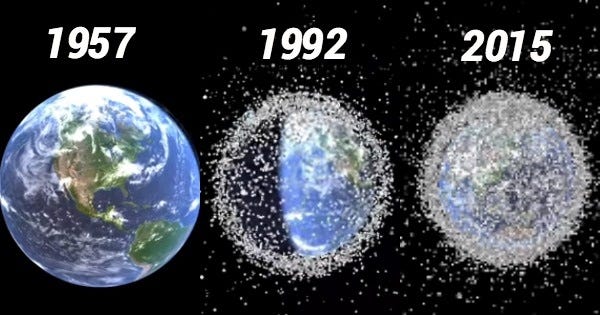"Space is for everybody" is a prominent saying, however, it once in a while remains constant — halfway in light of the fact that space is costly, and incompletely in light of the fact that specific nations have many years of a head begin and built-up techniques to depend on.
Reevaluating those setup strategies, in any case, could address imbalance as well as other approaching difficulties in space investigation also. That is the contention that controls the exploration of Danielle Wood, who runs a program at MIT's Media Lab, which centers around how to get things done in space that further value and equity on Earth.
"The manner in which we work in space, it makes a difference to everybody on Earth," Wood stated, and not generally positive. "The chronicled reality is that space innovation, it's a lovely history of what occurred in space, yet in addition, it has blended roots." [Astronauts Snap Amazing Last Glances of Space Station For twentieth Anniversary (Gallery)]
Quite a bit of that vacillation comes from the space race, which happened against a geopolitical scene of extreme patriotism that utilized space as a strategic maneuver — both through the hard intensity of supporting weapons examine and the delicate intensity of trying to awe recently autonomous previous provinces. America's initial spaceflight work was additionally profoundly established in military objectives, and our first rockets were planned and worked by designers selected from Nazi Germany after World War II.
While Wood acknowledges the significance of physical security, she said it's past time to move the objectives of the room so extends adjust all the more intimately with different qualities people hold, similar to equity — which she characterizes as guaranteeing everybody can get to space and utilize its innovation to meet nearby objectives. She centers her work around the United Nations' Sustainable Development Goals, a lot of 17 worldwide needs made by the U.N. Advancement Program. Test objectives incorporate completion hunger, guaranteeing access to clean water and tending to environmental change and its belongings.
Customary space innovation does here and there location these issues. For instance, satellite information can illuminate horticultural practices, for instance, and an entire armada of satellites watch out for atmosphere pointers. Yet, they do as such inside the limits of a similar satellite structure and rocket innovation that supports every other utilization of room. Wood has faith in putting these qualities at the base of an undertaking, with the goal that they mix consistently.
Think about how we control rockets in any case — with gigantic amounts of lethal, combustible rocket fuel that researchers suspect is contaminating Earth's upper climate. Architects normally work to diminish the measure of fuel they require, however Wood pushes the inquiry more profound. "Would we be able to pick elements for the rocket that are not all that costly or so hard to work?" she said. So her group is examining whether paraffin wax could supplant rocket fuel since it's less expensive and more secure to deal with.
Another region in which Wood is working is the means by which satellites are made. "Our present methodology fundamentally relies upon completing a structure for a satellite that is finished on Earth," Wood said. "We can envision a future in which there are essentially little manufacturing plants accessible in space." Incorporating innovation like 3-D printing and secluded parts, get together could move to space, changing the designing issues and costs associated with building satellites.
Such a methodology could likewise influence the difficulties and expenses at the opposite end of the generation cycle. At the present time, when satellites are never again being used, most are cautiously de-circled to abstain from jumbling space — however, for a considerable length of time, the primary spacefaring countries didn't stop to stress over leaving garbage in the circle. That gave them preference. "Early space performers could adopt kind of a languid strategy to satellite designing," Wood said. For whatever length of time that it achieved space securely and carried out its responsibility without breaking, it was a triumph. [Explorer 1: America's First Satellite in Pictures]
More up to date satellite manufacturers don't have that extravagance since space garbage has turned out to be such a test — they require a cleaner endgame. Furthermore, they need to work around flotsam and jetsam as of now set up, planning directions and advancements that protect their manifestations from the litter of past satellites, which can cause incredibly harming crashes. "They're additionally acquiring the physical substances of what's going on in the circle because of space flotsam and jetsam," she said.
Be that as it may, reevaluate satellite generation, Wood stated, and space garbage could be planned out of the framework. Satellites that have filled their need could be part into their measured parts or softened into 3D printer stock material, recovering their successors.
What's more, such updates could likewise close the hole between building satellites and motivating them to space. Indeed, even as less expensive little satellites like CubeSats have multiplied, progressively settled spacefaring countries still control most dispatch openings, with the eminent special case of a United Nations' program that has helped nations like Kenya and Mauritius assemble satellites propelled from the International Space Station. In the event that a satellite can be worked in a circle, its maker doesn't have to depend on dispatch ability.
That would give more nations a chance to utilize space to seek after the objectives that bode well for them on the ground — and make space an all the more simply put, Wood said.



No comments:
Post a Comment
Paste Your Website and Article Link To Create Do-Follow Backlink